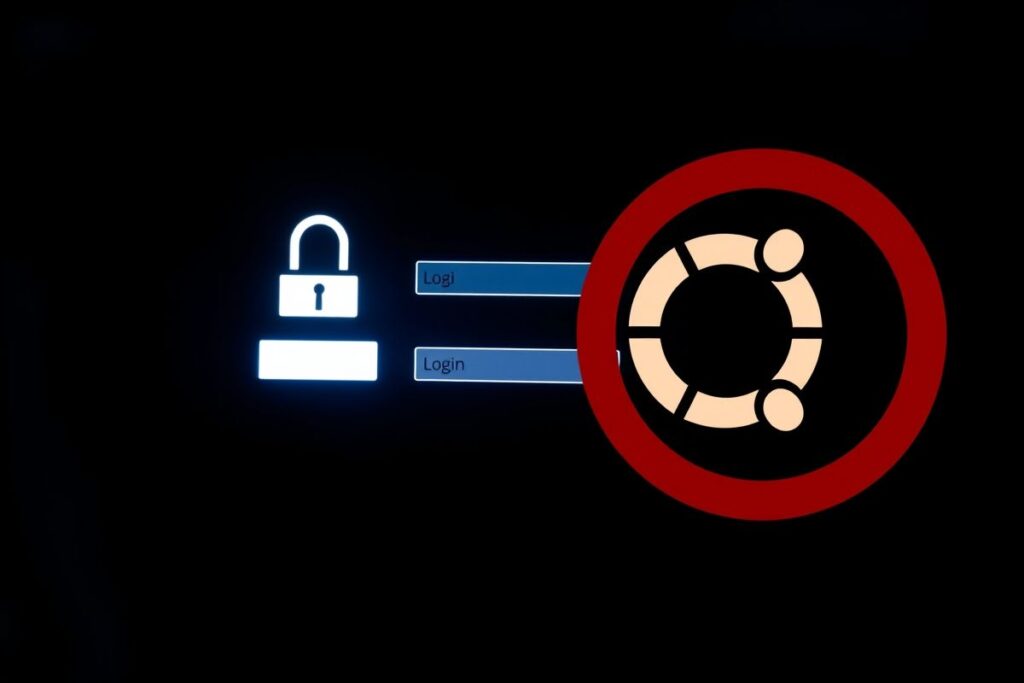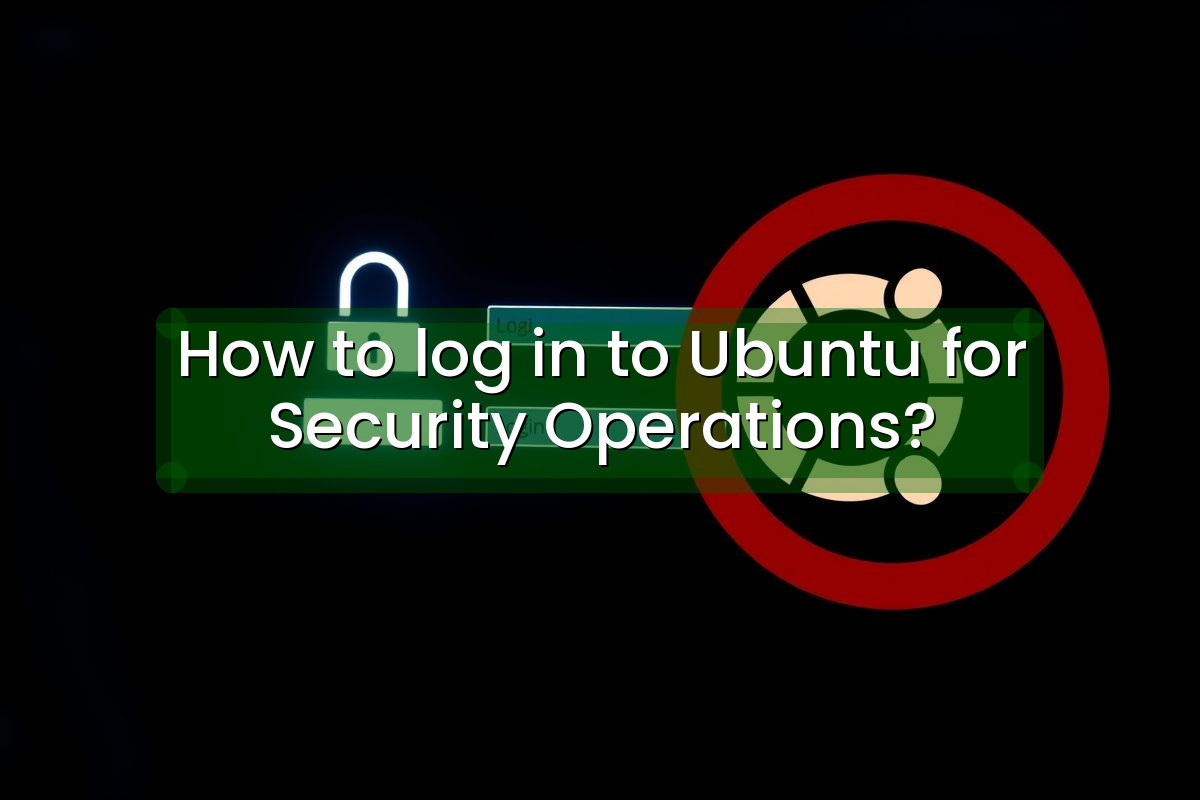How to Log In to Ubuntu for Security Operations?
In today’s interconnected world, robust security operations are paramount. Ubuntu, a popular Linux distribution known for its stability and security features, serves as a powerful platform for managing and monitoring security infrastructure. Whether you’re a seasoned security professional or just starting out, understanding the nuances of logging into Ubuntu is crucial. This comprehensive guide delves into various login methods, emphasizing security best practices and exploring advanced techniques for hardened systems. We’ll cover everything from basic terminal logins to utilizing SSH keys, ensuring you can securely access your Ubuntu environment for all your security needs. This guide isn’t just about gaining access; it’s about gaining access securely, setting the foundation for effective security operations.

Understanding Ubuntu Login Methods
The Graphical User Interface (GUI) Login
The most common method for logging into Ubuntu is through the graphical user interface. This method provides a user-friendly experience, allowing you to easily input your username and password. While convenient, it’s essential to configure strong passwords and enable additional security measures, such as screen locking, to prevent unauthorized access.
The GUI login offers a visually intuitive way to access your Ubuntu system. It simplifies the login process for users, making it accessible even to those unfamiliar with command-line interfaces. However, its ease of use shouldn’t be mistaken for a lack of security considerations. Implementing strong passwords and other security features remains critical.
Regularly updating your system and ensuring your desktop environment is configured with the latest security patches are crucial for maintaining a secure GUI login experience.
Command-Line Interface (CLI) Login
For security professionals, the command-line interface (CLI) is a powerful tool. Logging in via the terminal offers greater control and allows for scripting and automation. Understanding CLI commands for user management and system administration is essential for effective security operations.
The CLI provides a flexible environment for executing security-related tasks. From managing firewalls to analyzing system logs, the command line empowers security professionals with granular control over their Ubuntu systems.
Mastering the CLI allows for efficient scripting and automation, streamlining repetitive security tasks and improving overall operational efficiency.
SSH Key-Based Authentication
SSH key-based authentication provides a robust and secure method for remote login. This method replaces password-based logins with cryptographic keys, enhancing security and mitigating the risk of brute-force attacks. Generating and managing SSH keys is a critical skill for any security operator.
Utilizing SSH keys significantly strengthens your system’s security posture. By eliminating the need for passwords, you drastically reduce the vulnerability to password cracking attempts. This is particularly important for remote access to security-sensitive systems.
Learning how to properly generate, manage, and secure your SSH keys is paramount for establishing a secure remote login process. This includes protecting your private key and understanding the different types of SSH keys available.
Securing Your Ubuntu Login
Implementing Strong Passwords
A strong password is the first line of defense against unauthorized access. Use a combination of uppercase and lowercase letters, numbers, and symbols. Avoid easily guessable passwords and consider using a password manager.
Password complexity is crucial for mitigating the risk of brute-force attacks. Longer passwords with a diverse mix of characters make it exponentially more difficult for attackers to crack your login credentials.
Regularly updating your password and adhering to best practices for password management are essential for maintaining a secure system.
Two-Factor Authentication (2FA)
Two-factor authentication adds an extra layer of security to your login process. By requiring a second form of verification, such as a code from a mobile app, you can significantly reduce the risk of unauthorized access, even if your password is compromised.
Implementing 2FA provides enhanced protection against various attack vectors, including phishing and credential stuffing. This added layer of security makes it significantly more challenging for attackers to gain access to your Ubuntu system.
Explore different 2FA methods and choose the one that best suits your security needs and operational workflow. Consider factors such as ease of use and compatibility with your existing infrastructure.
Advanced Security Measures
Firewall Configuration
Configuring a firewall is a critical step in securing your Ubuntu system. A firewall acts as a barrier between your system and external networks, controlling incoming and outgoing traffic. Proper firewall configuration helps prevent unauthorized access and protects against malicious activity.
Understanding the different types of firewalls and their respective configurations is essential for effective security management. Learn how to configure rules and policies to allow legitimate traffic while blocking potentially harmful connections.
Regularly review and update your firewall rules to adapt to evolving security threats and ensure your system remains protected.
Intrusion Detection/Prevention Systems (IDS/IPS)
Implementing an intrusion detection system (IDS) or intrusion prevention system (IPS) can further enhance your security posture. These systems monitor network traffic for suspicious activity and can alert you to potential threats or even automatically block malicious traffic.
Understanding the differences between IDS and IPS and how they can complement your existing security measures is essential. Choose the right system based on your specific security needs and risk tolerance.
Regularly update your IDS/IPS signatures and configurations to stay ahead of emerging threats and ensure your system remains protected.
Frequently Asked Questions
| Login Method | Security Level | Ease of Use |
|---|---|---|
| GUI | Moderate | High |
| CLI | Moderate | Medium |
| SSH Key | High | Medium |
- Use strong passwords.
- Enable two-factor authentication.
- Configure a firewall.
- Implement an IDS/IPS.
